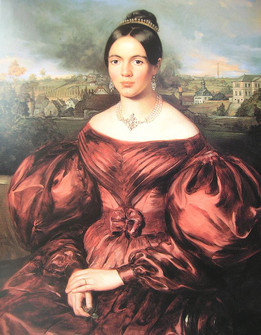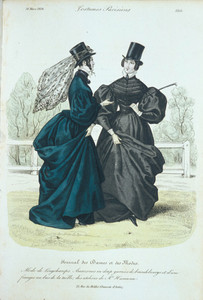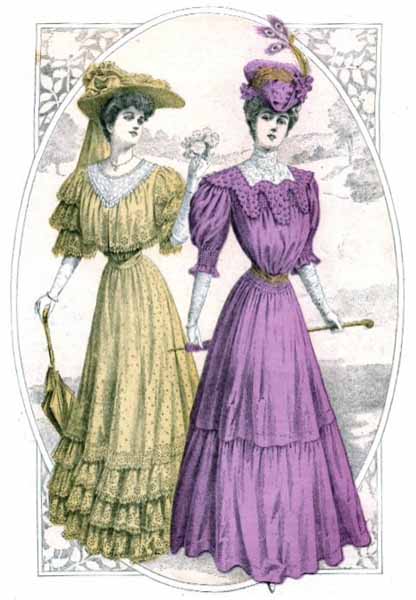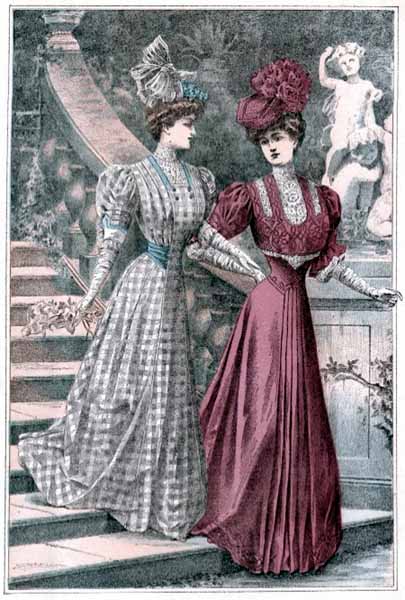The Magic Behind Puffy Sleeves
- Ashley Webb
- Dec 17, 2020
- 4 min read
If you've been paying attention to bustle's Instagram page, you'll have noticed a lot of puffy sleeves making an appearance. I'm not sure what it is, but winter really makes me revel in those giant sleeves (hint: you'll be seeing more of these sleeves over the coming months!) In studying photographs, fashion plates, and old magazines from the 1890s, I've always wondered how the giant gigot, leg-of-mutton, or puffed sleeves kept their shape. Unfortunately, like a balloon, they'd deflate without some sort of...something...keeping them puffed up. Surprisingly, it's not magic, but there is some bit of smoke and mirrors to get them to stand on their own.
Recently, I was scrolling through an 1890s edition of the Delineator (digitized and made available free thanks to Hathitrust, the University of Virginia, and Google), and saw an ad for Fibre Chamois - a stiff interlining advertised for gigot sleeves and skirts.
This led me down a giant rabbit hole, and I began looking into the construction and support of them. Something has to hold up those giant balloons - in some cases, each arm was made from a yard or more of fabric! You can really see this in the gorgeous red dress below from the Fashion Institute of Design & Merchandising's collection (FIDM).
First, let's look at the appearance of the gigot sleeve in mainstream fashion - cue the 1830s. (Please note, there is evidence of gigot sleeves in the Elizabethan period - European fashion is mainly out of my expertise; hence the reason I'm going from the 1830s).
The sleeve construction for the 1830s involved a sloped shoulder line, with the shoulder seam of the garment starting about halfway down the arm. This style leg-of-mutton sleeves, called this because they looked like the leg of a lamb - large at the top, tapering down to a narrow sleeve past the elbow to the wrist - remained in style throughout the early to late1830s.
American Duchess created a video about patterning 1830s sleeves. It's great because it illustrates not only the sheer size of the pattern, but how much yardage of fabric was needed just to create a single sleeve. The video has a lot of extra fluff, and is very informal, but if you start 1:18 and watch until 2:32, you'll get the gist.
The 1830s sleeves were supported by either whalebone supports or sewn supports stuffed with down - the soft under feathers from birds. Below is a pair in the collection of the Met - these could have been worn with either the voluminous long sleeves, or on a short sleeved ballgown.

As with the sleeve patterns, American Duchess created mockups of sleeve supports for their 1830s bodices. Again, this video is very informal, and is targeted more toward people who are making said supports. If you start at 2:55, they talk about experiments they did in finding out the best way to wear them, how to get them in the sleeves, as well as making them stay in the sleeves. Everything before is basically just how to make your own for your historical reproductions.
The 1830s gigot sleeves saw a resurgence in popularity in the early to mid-1890s. Instead of sitting off the shoulder, the 1890s sleeves extended the shoulder line both slightly upward as well as outward. This exaggerated shoulder line helped to accentuate the waist - giving the illusion that it was tinier than it actually might have been.
I go back and forth between loving and hating this style. Right now I'm in love!

The same principles used in the 1830s were applied in the 1890s through the use of sleeve supports. At this time, stronger interfacings were being created - like that of Fibre Chamois - so the need for supports was becoming somewhat obsolete. I believe interfacing was used in the jacket at right - they sleeves seem slightly floppier, and only seem to hold their rigidity at the pleating around the shoulder itself.
On thinner bodices, like the one in last week's post, supports were most likely used.
So, what kind of supports are we talking about? Much like a bustle, the shoulder supports were aimed at maintaining and giving the illusion of a certain figure. And again, much like a bustle, there was no real 'right way' to make sleeve supports. They weren't meant to be seen, so what if the cheapest materials were used and the sloppiest construction was taken?

The 1890s version of the sleeve supports were more lantern and globe-like. They had to not only hold the sleeves out, but up. Some supports look more like bustles with bound steel wiring and twill tape.

I'm not exactly sure how this would have attached to the garment or undergarments, but this would have certainly given the sleeve more umph instead of deflating. Plus, it's collapsible and somewhat malleable, making it easier to get into the sleeve hole itself.
Just as the 1830s gigot sleeves disappeared from fashionable wardrobes by the 1840s, so did the 1890s gigot. About 1897-1898, women reverted to a tighter arm and an S-shaped silhouette. There was a small resurgence again around 1905-1906, but the sleeves themselves didn't necessarily bloom outward - just slightly roomier across the upper arm.
I often wonder, as one does, about the dissemination of undergarments such as these. How did people find out about and discover what worked and where to buy such items? Maybe I'll do a further search for ads concerning particular undergarments another day. Should anyone comes across a pair of sleeve supports and should feel so inclined to purchase me a Christmas present, I wouldn't say no ; )

















































